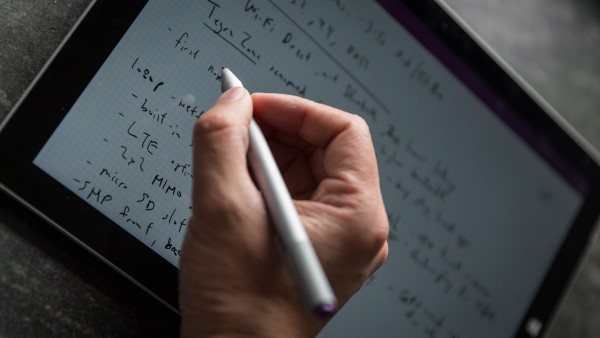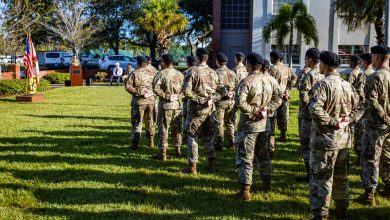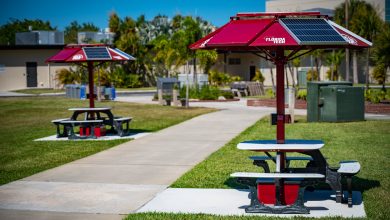Software engineering majors help stroke patients, with the stroke of a hand
Software Engineering Majors Find Inspiration
If you ever get frustrated using a stylus, imagine what someone with hand tremors feels like. Patients who have suffered a stroke often find texting very difficult and turn to a stylus. But as software engineering majors, Dominque Wehner and Kasey Powers, discovered there aren’t any styluses on the market that have the capability to compensate for stroke patients’ hand tremors while writing. They used their student design project has an opportunity to develop new technology for stroke patients.
After unboxing and testing a new Surface Pro computer, the software engineering majors felt there was an opportunity. “My team partner Kasey bought a Surface Pro and realized the stylus input could definitely be improved upon,” says Dominique.
Their game plan was to read stylus input in a different way than current applications and find a software solution to cleanup any uneven stylus input. “This way, we can provide a more accurate and efficient stylus input to text application,” Dominique explained.
The Situation
Mobile input comes in different forms, the most common of which tends to be the virtual keyboards found on devices with touch screens. They provide some of the easiest, cheapest, fastest and most effective ways of improving a mobile experience.
With the versatility of this input type, users can enter information on keyboards optimized for text, email addresses, phone numbers, long numbers, passwords, dates, times and even searches. Stylus inputs however combine these experiences by providing a method for receiving input, that encompasses all these information types using a fresh slate rather than a template.
The main issue that comes with this is the precision it requires from the user. It’s almost like it’s offering a very straightforward deal: “I’ll let you write whatever you want, as long as you don’t make it too difficult for me to understand,” says Dominque.
A fair deal, except that handwritings vary to a considerable extent and people who suffer hand tremors after having a stroke have a whole other issue on their hands, literally. Dominique and Kasey set out to create a stylus input that allowed for these discrepancies and collected input more accurately while requiring less work from the user.
The Lesson

This did not come easy however, and they found themselves re-working their strategy and going back to the drawing board quite a bit. “We found ourselves re-writing a lot of our functions because we realized the stylus input was lagging,” says Dominique.
Although satisfied with their results and the fact they were able to provide a solution to a real life problem, they acknowledge there were things they would have done differently. “Assuming the info we know now, we would have begun implementing things the way we eventually did after rewriting,” says Dominique. “That way, we would have more time to work on our tree class.”
Looking Forward
Dominique and Kasey believe the main takeaway from the experience was the broader understanding of the programming languages at their disposal. “I learned a lot,” says Dominique. “PHP, HTML, and other skills that will be helpful to my future career.”
Dominique’s advice to future senior design presenters is to plan in a way that allows for error. “Plan generously,” she advises. “Things you don’t expect will come up and you need to plan for them.”





